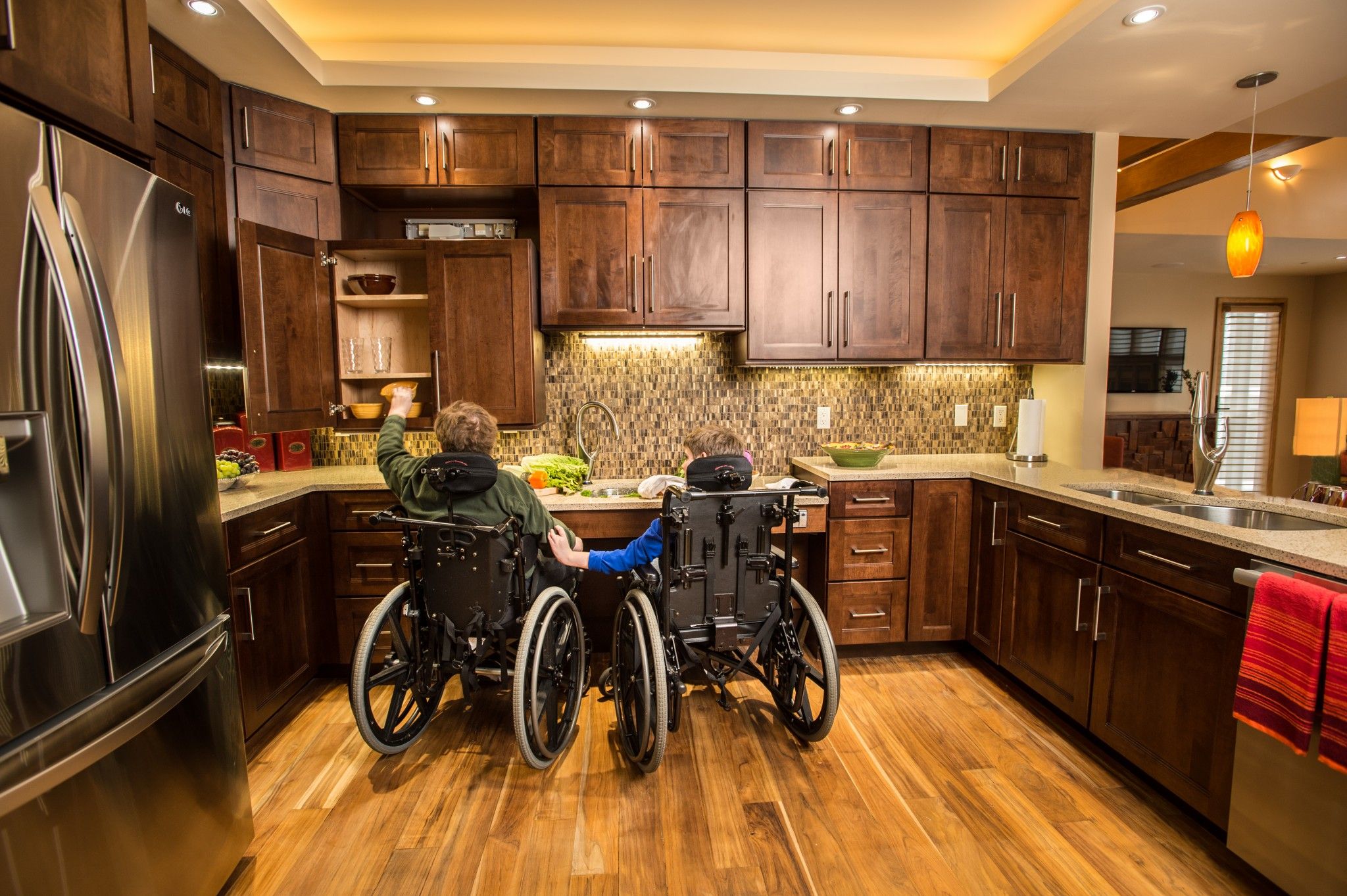
LiveWell Mobility believes that everyone deserves the freedom to move around their own home without restrictions. Our team of experts are passionate about providing mobility and accessibility solutions for people who need them. Our number one goal is to empower homeowners to transform their homes into safe, comfortable, and accessible spaces that they can successfully navigate through regardless of their mobility devices.
We have compiled a list of ways to make your home wheelchair accessible ensuring everyone, regardless of mobility, can enjoy being home.
1. Install Ramps
One of the most significant barriers to wheelchair users is stairs. Replace steps at entryways with ramps to provide easy access to your home. Ramps should be durable, anti-slip, and wide enough for comfortable navigation. LiveWell Mobility offers both custom built and modular ramp solutions to ensure that you find the correct ramp that fits the needs of your home.
2. Widen Doorways
Standard doorways are often too narrow for wheelchairs to pass through comfortably. A minimum width of 32 inches is required for wheelchair accessibility. Many times, those that are planning to age in place don’t stop to consider wheelchair or walker usage and that their home wasn’t originally built with that in mind. Updating the width of your doorways should be at the top of your list of important modifications for aging in place.
3. Installing a Stairlift or Vertical Platform Lift
If you live in a home that has multiple floors, a stairlift, elevator, or vertical platform lift is a must! If you struggle with mobility issues, living in a home with stairs can feel like a prison. Parts of your home become inaccessible and that’s simply not ok! Adding a stairlift can make traveling up and down the stairs a breeze if you can navigate without the use of a wheelchair. If you do depend on a wheelchair or walker, a home elevator would be the safer option.
LiveWell offers a full line of home elevators and vertical platform lifts, as well as stairlifts. We have straight stairlifts in stock that can be installed quickly! Our innovative through the floor elevators are an affordable and space-saving solution that can be installed in a fraction of the time of a traditional elevator.
4. Bathroom Modifications
The bathroom is the most dangerous room in the home for those living with mobility challenges. A standard bathroom has lower toilets, taller vanities, and showers or tub combos that can be very dangerous to step in and out of.
LiveWell recommends installing a zero-entry shower that does not require you to step over the threshold and into the shower. It’s also wheelchair accessible because there is no barrier and the wheelchair can be rolled in without a problem. We also recommend grab bars in the shower and around the toilet area. Installing a raised toilet that sits higher than a standard toilet is also a big improvement. Wheelchair accessible vanities allow for a wheelchair to smoothly slide under the counter for easy access to the sink.
5. Adjust Kitchen Counters and Cabinets
When looking at the current layout of your kitchen, consider a wheelchair moving about and trying to prepare a meal. What challenges do you see? Lowering kitchen counters and cabinets can make food preparation and storage more accessible. Installing pull-out shelves and lazy Susans can make a huge difference. When choosing cabinet and drawer hardware, look for knobs and pulls that are easy to pull and grasp without much effort. Those living with arthritis may have a hard time gripping and pulling so a simple and larger pull or knob would be beneficial.
6. Remove Obstacles and Tripping Hazards from the Floor
Plush carpets and rugs can definitely make a home feel cozy, but they are also a major tripping hazard and detrimental when trying to navigate through a home with a wheelchair. Hardwood, laminate or tile are much easier to roll across with a wheelchair. Removing area rugs also removes a large tripping hazard. Walkers and canes can get caught on the edge or corner of an area rug and cause a serious, sometimes fatal, fall.
7. Update Your Home with Smart Technology
Smart Home technology can simplify living in your home and it also aids in accessibility. Devices such as remotely controlled lights, locks, and blinds can make life much simpler and can be done from the touch of a button on your smartphone.
8. Ensure Adequate Lighting
As we age, our vision begins to deteriorate and it becomes harder to see obstacles in our way. Improving the lighting in your home can make a huge difference. Adding brighter lighting in hallways, kitchens and bathrooms can make it easier to see if there are hazards in the way,
Modifying your home to accommodate a wheelchair or for preparing to age in place can see like a huge task. Thankfully, you are not alone! Our team of Accessibility Consultants can meet with you to discuss your particular needs and to walk you through the process. We offer a free, in-home consultation and can provide suggestions of modifications that you may not have thought of that could be beneficial.
No matter how small the changes may be, making modifications to your home moves you one step closer to a fully accessible home that is safe for everyone. Give us a call today to schedule an appointment and let us help you with this journey!
Click here to read more or to see our recent projects.

